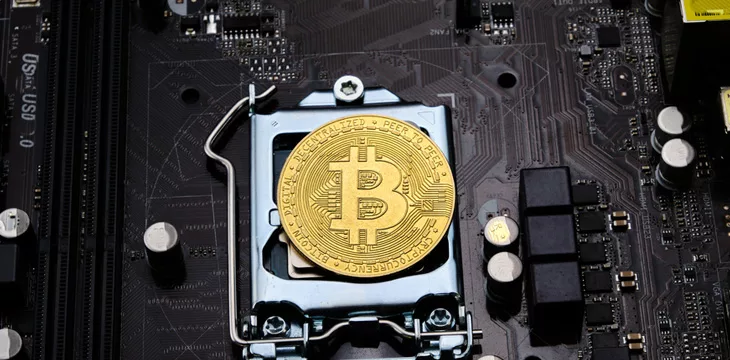|
Getting your Trinity Audio player ready...
|
Let’s take a new look at the economics and incentives that drive Bitcoin transaction processing, commonly called “mining.”
The BSV Blockchain Association has published a new ebook on the topic authored by Bryan Daugherty, Gregory Ward, and Kurt Wuckert Jr., promising to be “your guide to understanding miner economics like never before.”
The book is titled “The Next Era in Miner Economics: Embracing Coopetition and Infrastructure” and is available for free digital download on the BSV Blockchain Association website.
I'm thrilled to announce the upcoming release of our latest eBook, a deep dive into the world of #blockchain #economics.
The second in a series on #MinerEconomics, this project is a collaborative effort with leading industry experts, @Codenlighten1, @Brendan_Lee__ , and…
— Bryan Daugherty (@BWDaugherty) December 21, 2023
Processor/mining economics is an “evolving landscape,” the book says. North America has returned to a forefront position in the industry; there are ongoing debates over optimal fee levels (and who, if anyone, should decide them), as well as intra-industry arguments over how blockchain networks should be used. In the wider world, blockchain itself must still make its case for why the technology is superior to non-blockchain data processing regarding cost-efficiency, security, and reliability.
“Responsible for validating and recording transactions, miners form the backbone of any blockchain. The economic motivations and actions of miners, commonly referred to as ‘miner economics,’ determine key aspects of a blockchain’s health and stability.”
Block subsidies vs transaction fees
“Miners are evolving beyond their traditional roles as mere extractors of block subsidies,” the book says.
“Block subsidy” refers to the set amount of bitcoins a miner receives upon discovering/solving a transaction block. This amount halves every four years according to Satoshi Nakamoto’s original design—from 50 bitcoins per block in 2009 to today’s 6.25, and this will halve again in 2H 2024 to 3.125.
Rather than worrying whether Bitcoin market prices will increase sufficiently to cover the lost income, miners should seek ways to grow the network and boost income from transaction fees. This should be in the form of more users, not higher fees.
The BSV blockchain network has removed caps on block sizes, though miners may set their own maximums. This shifts the focus away from income from block subsidies (and the hunger for ever-increasing Bitcoin prices, as in BTC) toward income from transaction fees. The latter promotes ecosystem building over price speculation by finding and encouraging new use cases and developing large-scale applications.
The authors frequently use the term “coopetition” to describe how players in the processing/mining space should interact with each other. It refers to the balance they must strike between investing to gain a computational advantage over other miners while recognizing their role in maintaining the network’s health and reputation overall and how these factors impact usage.
On a larger scale, miners’ true competition includes VISA (NASDAQ: V), Mastercard (NASDAQ: MA), AWS, and even legacy ISPs. These high-volume, big-data entities have scopes that range far beyond most blockchain discussions.
The true dangers of ‘centralization’
The book draws a distinction between “mining centralization” and “protocol control.” There’s a “widespread misunderstanding” that large amounts of hashing power in just a few hands will lead to bad outcomes. The protocol defines the rules, and miners must follow them or have their blocks rejected by the network. Thus, the real danger lies in the centralization of control over the protocol itself.
The necessity to process much larger blocks (as on BSV) is a technical challenge that advantages processing/mining operations with greater resources. However, the book argues this does not automatically lead to monopolization.
“Mining is not merely a game of computational prowess but a multi-faceted operation that rewards strategic and balanced growth in various aspects of the ecosystem.”
We’ve seen how protocol centralization became a problem for BTC, with a small cartel of protocol developers and their financial backers able to define new rules that support their own preferences or derail fixes that don’t. Under Bitcoin’s rules, miners can “vote” to follow rule changes. However, the only way to vote against the changes is to have blocks rejected and/or leave the network.
BSV’s “set in stone” protocol rule gives miners a similar choice (enforce or leave); however, developers do not have the power to change the base protocol rules. In neither case should miner decisions be called “voting.”
Maintaining a responsible blockchain network
Miners must act in the network’s best interest, investing their resources and energy in improving connectivity and integrity. The hypothetical “51% attack” threat has been a scenario since Bitcoin’s early days, suggesting that a miner that controls over 50% of total hashing power could perform “double spends” of the same coin/s. However, the authors point out that such action would leave an evidence trail, prompting other processors to reject/blacklist the bad actor.
Finally, the book presents a section on “environmental sustainability” to counter media claims that Bitcoin and superior proof-of-work (PoW) processing in any form are energy-wasters. A network with a few million users will consume the same energy as one with billions of users; therefore, a more useful and scalable network offsets energy-use concerns.
“The industry’s obsession with the token and/or its price often results in underestimating the inherent value of blockchain as a data utility protocol.”
Just as there are large incentives to invest in hashing supremacy over other processors/miners, there are equal incentives to maintain communication links between competing operations. This assists in block propagation, identification of possible rogue actors, and other threat warnings. Processing entities within BSV like TAAL, Quadlink, and GorillaPool should “ideally” have dedicated connectivity lines, and the book suggests “a more defined fiduciary relationship to the protocol” should become normalized.
The book is just 15 pages long, is easy to read even for newcomers, and does not get into heavy math or economic theory. Its intended audience is likely relative newcomers to BSV and Bitcoin protocol issues, though even those familiar with the concepts will benefit from the clear and concise arguments it makes. This makes it recommended reading for all interested in blockchain, Bitcoin, protocols, and infrastructure.
“Overall, the time is ripe for infrastructural innovation in the mining sector. By embracing coopetition and investing in network infrastructure, we can usher in a new age of mining, one that aligns more closely with the underlying ethos of Satoshi’s Vision.”
Watch: Think of Bitcoin mining as financial self-discipline

 07-08-2025
07-08-2025 





